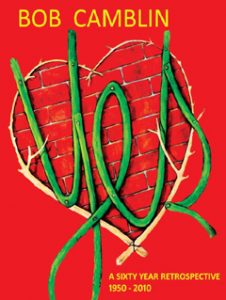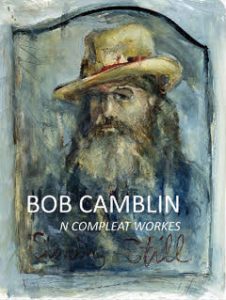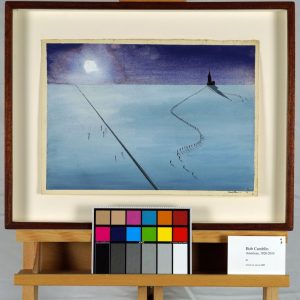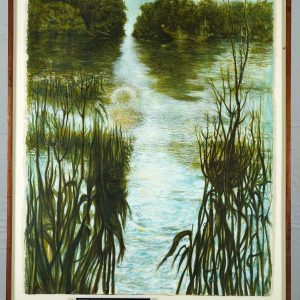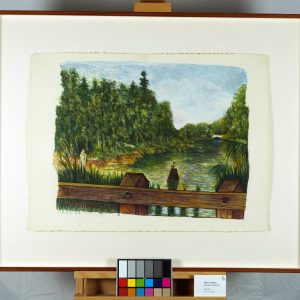Description
Marionette, 1950Acrylic on board
Signed
21.5 x 16.5 in (frame)
original, includes certificate of authenticity from ArtTrust
The painting “Marionette” features two massive hands in the sky manipulating a marionette. The marionette is dressed in a harlequin outfit, evoking traditional jesters or performers. The desert-like background gives a sense of emptiness and vastness, emphasizing the solitary nature of the figure. The hands are prominent, painted in a pale yellow, which contrasts with the deep blue sky.
The image evokes the Zen concept of non-attachment and letting go of control. The puppet could symbolize the human struggle with control and the illusion of free will. The vast emptiness of the desert further aligns with Zen’s focus on the void, suggesting the idea that much of our sense of control is illusory, and life is ultimately beyond grasp.
A relevant hexagram here could be Hexagram 29, “The Abysmal (Water).” It represents danger or facing inner challenges, which suits the image’s implication of confronting one’s manipulation by unseen forces. It may also indicate a need to flow like water, adapting to circumstances rather than resisting the strings of fate.
Combining the perspectives, the artwork serves as a meditation on the illusion of autonomy. While we may feel controlled by external forces (symbolized by the hands), there is an underlying truth of interconnectedness and acceptance that leads to inner freedom. The harlequin, often seen as a character who plays various roles, might suggest our need to adapt to life’s unpredictable flow.
The style resembles surrealist art, reminiscent of Salvador Dalí’s exploration of dreamlike scenes and René Magritte’s manipulation of scale and reality. It reflects the influence of these movements in questioning perception and the nature of existence.
*Shipping cost will vary, please inquire at sales@camblingallery.com before purchasing.
Currently ships from Oregon, USA
Member of artnet? Apply for a discount! Inquire about intergallery and permanent loans for museums.
“Marionette” was featured in his Yes Retrospective, in volume I of the series Bob Camblin N Compleat Workes, and in Sandra Jensen Rowland’s monograph, Bob Bilyeu Camblin – An Iconoclast in Houston’s Emerging Art Scene.
Reproductions of this drawing are available in multiple sizes!
Click here to use our high-resolution viewer!
This artwork is available with a non-fungible token to ensure traceability and transparency of provenance.
The royalty factor – Unlike traditional artworks, such as paintings, mosaics, statues, and the like, NFTs can be programmed to provide royalties to you every time the painting (and token) is sold and resold – for eternity. That mind-bending Camblin you sold could be worth millions one day and provide income for your great-great-great grandkids!
Anti-forgery – The central idea underpinning NFTs is that they are built on the blockchain, which is meant to offer advanced security. Think of it like an un-erasable and un-avoidable copyright.
Easy authentication – Another compelling aspect of NFT art and NFTs in general is the ability to quickly and easily authenticate items, as the record of ownership is scrupulously kept on the blockchain.

